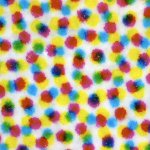As part of a major color management program we are currently implementing I am testing Alwan's Optimizer ECO software. I know that there has been a lot of discussion on the subject of GCR but I wanted to get some input on this from those who have seen what I am seeing.
I have a 38" six unit Goss Sunday 2000, a Heidelberg XL 105 and an HP Indigo 7200 and am finger printing, profiling and developing plate curves for each. I've been told that GCR is the way to go to gain better stability on press however our flesh tones, with GCR applied, have a muddy, greyish look. If anyone is familiar with Alwan's ECO Optimizer we currently use a GCR setting of 7 and I've tested several different settings an am almost tempted to do away with GCR all together.

Any input?
I have a 38" six unit Goss Sunday 2000, a Heidelberg XL 105 and an HP Indigo 7200 and am finger printing, profiling and developing plate curves for each. I've been told that GCR is the way to go to gain better stability on press however our flesh tones, with GCR applied, have a muddy, greyish look. If anyone is familiar with Alwan's ECO Optimizer we currently use a GCR setting of 7 and I've tested several different settings an am almost tempted to do away with GCR all together.
Any input?












